How to find the north pole star
This page is only applicable if you are in the northern hemisphere, which means you are to the north of the equator. You can't see the pole star at all if you are south of the equator, very close to the equator or in the southern hemisphere.

The pole star or Polaris is directly above the north pole of the earth and stays there all of the time. All other stars appear to move slowly from east to west as the earth rotates, but the pole star stays stopped at due north.
There are two distinctive star pattern constellations to look for when attempting to identify the pole star. The first constellation looks like a pan with a handle, and is called the Great Bear or the Big Dipper. The end two stars are called the pointers and these two stars aim you towards Polaris or the Pole star. On the other side of the Polar star is a constellation that looks like a W. This is called Cassiopia. If you can see this Cassiopia constellation then you need to look for the pole star going upwards from the top of the W.
● The main thing to remember is that if you can see the pole star you are looking exactly due north.
If you are far north, for example, in Canada, Norway, Sweden, Finland or Asia the pole star appears high up in the sky and you can always see both the Great Bear and Cassiopia W constellations simultaneously.
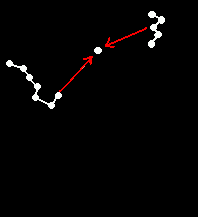
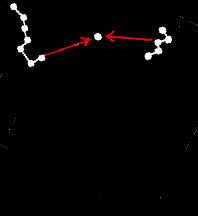
The pole star is high up in the night sky.
If you are in a moderate latitude like 30 to 60 deg North (e.g. USA, Europe, Romania, Russia, China, Mongolia) then, when you face to the north at night you will see a night sky that looks like this. The pole star is midway up the sky.
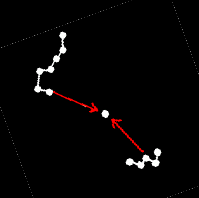
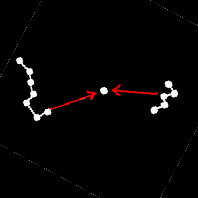
These two images show the sky if you are nearer the equator, in latitudes like 10 to 30 deg north, e.g. southern USA, Caribbean, North Africa, Middle East, India, Hong Kong.
The pole star is low down towards the northern horizon and sometimes you don't see the Great Bear and Cassiopia simultaneously. The pole star itself may also be rather hidden in any clouds or haze near the northern horizon.
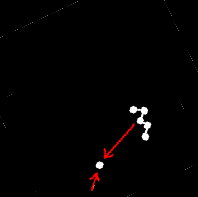
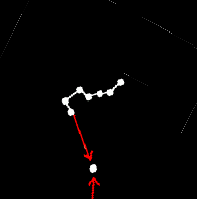
The pole star is low down in the night sky.
When you look at the sky for the first time note the positions of the constellations. If you wait a hour or two and repeat, you will see that all the stars appear to move round, at a rate of 15 deg per hour. If you look on different dates and different times of the night you will see the constellations in different places.
Explanation of latitude and longitude
Finding your latitude and longitude
Help with azimuth and elevation dish pointing
The distance to the pole star is 432 light years.
If you want to see how difficult it would be to send a radio signal to the star or to receive a signals from aliens near the pole star try the SETI radio range calculator here: SETI range calculator
|
Page started 10 Feb 2008, amended 11 May 2025. |